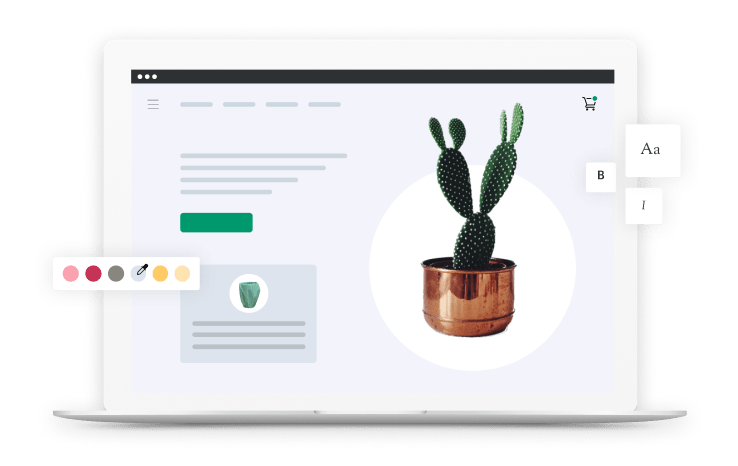-
The next big step is figuring out how you will produce your product. There are really two ways to go about manufacturing your product. Your first option, of course, is to make the product yourself. In the beginning, producing your product yourself is the easiest and likely the most cost-effective way until you have a consistent stream of sales. Here are a few other things to keep in mind. When you make your own product, you have low startup costs, full control of your brand, full control of your price, and the all important quality control.
-
A major benefit to making your own product though agility. That's where you can adjust quality, features, or even your entire product on the fly based on feedback you get from early customers. Doing it yourself allows you to save on costs such as hiring people who often want more stable work and only producing as needed based on your sales. While these are all strong benefits to making the product yourself, you need to consider a few challenges you will face.
-
Making your own product can be time consuming. Whether you still have a full-time job or even as you start to spend more time on your business, production takes you away from the business-related tasks that are also critical to running an effective company. The other option is to outsource the manufacturing of your product. When sourcing a manufacturer, you have the option of sourcing a local manufacturer or one from overseas. When you look for a manufacturer, it generally means that you have validated your product, and you are ready to scale.
-
Since you often have to have enough sales to justify the upfront costs associated with manufacturers, you won't want to engage possible partners until you have a steady amount of sales coming through. Here are the pros and cons of outsourcing. First, finding a manufacturing partner means that you free up a lot of time so you can focus on other aspects of the business, more time to market, develop your brand, support your customers, and focus on your business's long term growth.
-
When selecting which manufacturing partner to go with, you must be very critical as you are now going to be giving up some of the control over the production, which could ultimately impact the quality of your product. Any issues with your quality will reflect on your business and your brand. Things like proximity of where it is being produced so that you can validate quality from time to time is definitely something you want to keep in mind, especially at the beginning. It may be cheaper at a factory overseas, but it's also harder to keep an eye on things.
-
Another aspect of working with an outside manufacturer is that there will likely be minimum order quantities, potential bad batches, or fraud, especially if you're working with a manufacturer overseas. Minimum order quantity, sometimes referred to as MOQ, is the minimum number of units you need to order at one time. This is often because it can be difficult and costly for large manufacturers to retool their systems for your product. Manufacturers need to know they're going to get a certain amount of business that makes it worth their while as well.
-
Remember, manufacturing partners are business owners too. It's important to find a manufacturer that is in line with the size and stage that your business is in. In the early stages, it might make more sense to find a smaller manufacturer that has smaller minimum order quantities even if it costs a bit more. It allows you flexibility to make changes as needed and ensures that you don't have a product sitting in a warehouse for ages if you don't have the sales to support it yet.
-
And lastly, remember, the process of finding the right manufacturer can take some time, so keep that in mind as you plan. We highly recommend that if you do choose to work with a manufacturer that you visit their facility before signing a contract, perhaps check references with other customers of theirs and ensure you have done your due diligence. Even once you have selected a partner to work with, keep in mind that you must also have a backup plan. What if something goes wrong with the production cycle, with your chosen manufacturer, how will you handle the backlog of orders?
-
It's always good to maintain relationships with a couple of different manufacturers that you've vetted in the early stages. There's a chance you may need to call on one of them for help in the future. One other important thing to mention is that before you get started with manufacturing your product, research all the relevant regulations in your region and country as related to producing your type of product. For example, food products are highly regulated, and there are many rules and standards that need to be followed for consumer safety reasons.
-
Make sure you understand and comply with all these rules. At Jaswant's Kitchen, we chose to produce our own products since the beginning. Being in control of the production was important to us, because we wanted to have a very high-quality product. And we use some unique production processes that we didn't feel an outside manufacturer could duplicate well. In the beginning, our process was very manual. We had a small certified kitchen that we rented on evenings and weekends.
-
我们都必须努力确保我们有enough product ready for big shows and orders. We now work in an amazing 20,000 square foot certified food production facility where we rented dedicated space. And we have a small team of trusted employees who work with us. As we started to scale up our production to fill larger retail orders, we are now moving to semi-automated packaging machinery and also examining outsourcing parts of the process to co-packers who can do things much more efficiently than us.
-
Depending on the type of product you have, you'll need to weigh the pros and cons of doing things yourself or outsourcing to a manufacturer. This is a huge topic, so talking to other entrepreneurs in your industry can be a great way to learn a lot. As long as they don't have a product that competes directly with yours, we find that they are usually very open and willing to help out.











































